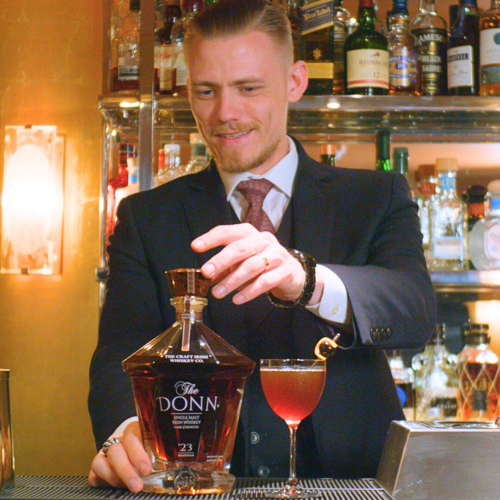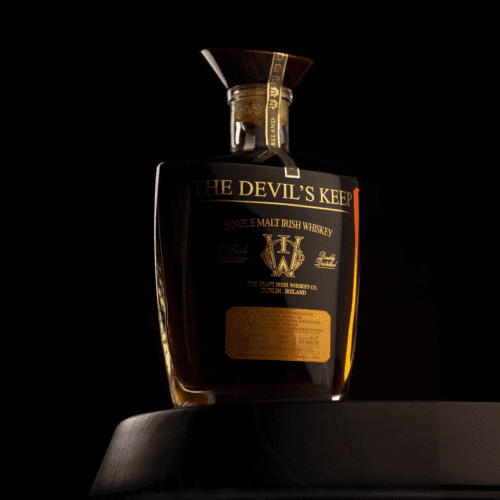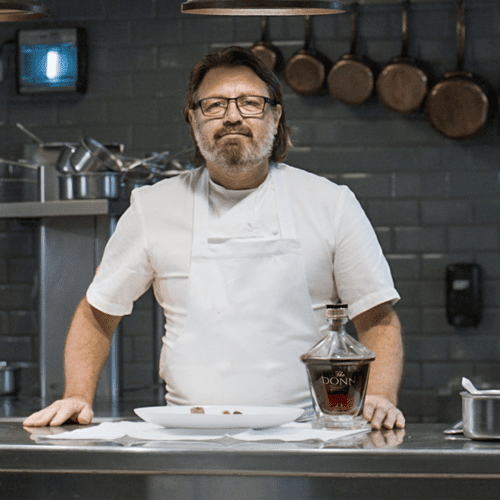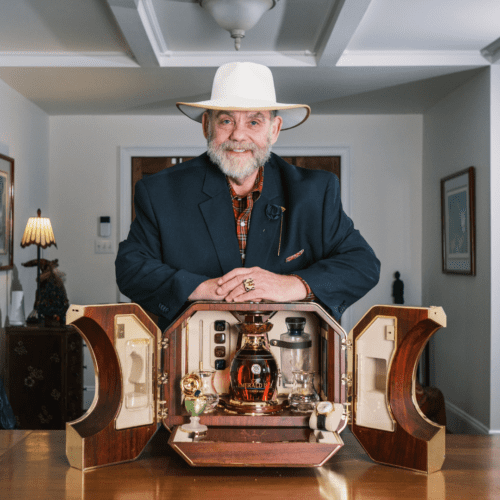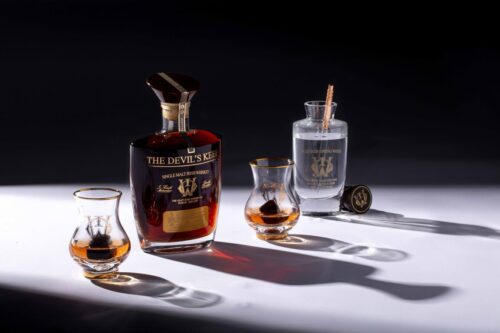With many prioritising quality over quantity, the ultra premium spirits category is on the rise. But what marks an ultra premium whiskey from the rest and why is it worth the extra expense? In this article we look at what it takes to craft a spirit worthy of the name – ultra premium – including a few tips and techniques you may not have heard of before.
Ultra Premium Whiskey – Discover what it Really Takes to Craft a Spirit Worthy of this Name
Recent research shows that there’s a growing taste for the finer things in life, especially when it comes to finely crafted spirits and premium whiskey in particular. As the IWSR research argues, ‘post-pandemic pent-up demand’ saw the value growth of beverage alcohol rise and this has now moved into a period of consumers choosing quality over quantity. As its data demonstrates, consumers are ‘primarily moving away from high volume, lower value beverages, such as wine and beer, and moving into lower volume, higher value categories such as whisky, tequila, gin and Cognac’. So just what is ultra-premium whiskey and how is this upmarket spirit crafted? Read on to find out more, including some of the bottles you should be adding to your collection.
What is Ultra Premium whiskey?
Ultra Premium whiskey isn’t one you’re likely to find on the supermarket shelves, or even in independent bottle shops. It’s categorised by The Spirits Business Awards as a whiskey priced at over £100, though can be anything far upwards of that.
But in many ways, Ultra Premium whiskey is about much more than money. It’s about the craft and skill that have contributed to intricately layered flavour profiles and a considered mouthfeel that work in harmony with one another. The higher price tags simply reward the time, resources, knowledge and experience that create the one-of-a-kind single malts and luxury whiskey that you’ll find on the bar of a Michelin-starred restaurant or in the collection of the world’s connoisseurs. Whether a rare whiskey or a slightly more readily available artisan whiskey, there’s a cachet to owning high quality whiskey that’s hard to come by.
A Premium Distillate
Ultra Premium whiskey begins with a premium distillate. Whether distilled in the brand’s own distillery or sourced from a well-established distillery with history and expertise behind it, this provides the foundations.
But the distillate really is just the foundations. Once a Master Blender or Whiskey Master has that distillate, they’re free to experiment with different techniques, casks and locations to layer flavour into the spirit. They can take that spirit on a journey, whether they know exactly what flavours they want to craft into the final whiskey or are seeing what direction that journey will take.
Just like the chef of a Michelin-starred restaurant, the original ingredients matter. But while a premium distillate can become a premium whiskey, it takes the skill of a chef to transform that distillate into an Ultra Premium whiskey. The finest whiskey in the world won’t come from an average distillate. But nor will it come from a premium distillate that’s simply been placed into a 200L barrel for a set number of years.
Instead, a true Whiskey Master will take that premium distillate, just as a chef takes the finest ingredients, and they’ll transform it with time, care, knowledge, attention and experience.
Using casks to build layers of flavour
Crafting the finest Irish whiskey or Scotch takes a deep understanding of wood, the treatment of the cask, styles and sizes, and the liquids once held in those casks. With around 60-80% of a whiskey’s flavour coming from the barrel or barrels it’s matured in, this is the stage that can make or break that premium distillate.
Here at The Craft Irish Whiskey Co. our Master Blender, Jay Bradley, builds layers of flavour into each ultra-rare and rare single malt. He takes a considered approach, spending time and money to craft a whiskey with a flavour profile that’s complex, richly detailed, with an intensity that’s drawn from a carefully managed selection of barrels. Using his attuned palate and an understanding of wood that was gained during his time as a competition-winning BBQ Pitmaster, he takes each handcrafted whiskey on a journey.
That journey can take any number of routes as he tastes the whiskey regularly to determine what it needs at any given time. It may emerge from its finishing barrel as a magical ‘honey cask’ like The Emerald Isle or take a carefully considered route through three or four barrels like The Devil’s Keep and The Donn.
He’ll build layers of sweetness, smokiness and fruit with barrels made of different woods, casks that have once been filled with a certain spirit, or are being used for the first time. To add smokiness they may be deep-stave toasted. And it’s not enough to simply choose any old ex-Port or Sherry cask from any old bodega for instance. With The Devil’s Keep, Jay handpicked Tawny Port casks from a specific bodega that he knew would impart the perfect level of sweetness. For The Donn he chose ex-Bourbon casks from an award-winning bourbon distillery which yard-seasons the barrels for three years, with the spirit entering the barrels at a lower 52% ABV. This ensures the spirit doesn’t over extract from the barrel, leaving a great flavour profile with complex, vibrant notes for The Donn.
When crafting Ultra Premium whiskey, it’s not enough to simply put it in a cask and walk away, then come back in 10, 20 or 30 years and put it in a bottle. Every single detail must be poured over and thought through with a near-obsessive level of attention and care.
Under-filling the Barrels
That care and attention doesn’t stop once the spirit is in those carefully chosen barrels. Single malts from expensive whiskey brands are likely to have used techniques that elevate the traditional art of whiskey-making. For example, our Irish craft whiskey honours the skilled artform that made Irish whiskey the finest in the world. But by applying a scientific approach and a willingness to question the accepted norms, we’ve changed the landscape of whiskey production.
Part of that breaking down of the status quo is seen in how we under-fill our whiskey barrels. When Jay started The Craft Irish Whiskey Co. he began to question many of the accepted processes, and one of these was the standard practice of filling a barrel to the top. We know that maturation is triggered by oxidation but that can only happen when oxygen is allowed in the barrel. And that can only happen when the Angels’ Share has evaporated sufficiently to create space – meaning a wait of around 2-3 years.
But by under-filling the barrel that oxidation happens at once, so the whiskey gains an additional 2-3 years of maturation time. Time where it rounds out and develops the exceptional mouthfeel and depth that marks top Irish whiskey from the rest.
No Age Statements
As we’ve mentioned, to create Ultra Premium Irish whiskey, Scotch, or whiskey from any part of the world, you have to taste it regularly. You have to know how the spirit is developing and how the barrels are imparting their flavour. Is that happening too quickly or too slowly and would the spirit benefit from being moved to another area of the warehouse or country? Or has the whiskey taken enough of that flavour and needs moving to a new barrel for another layer of flavour?
As you might have noticed, there’s a science to crafting an Ultra Premium spirit. The flavour compounds in whiskey don’t simply progress in a linear, timely fashion. They fluctuate, peaking and troughing throughout the year. Our research showed that ethyl acetate – the flavour compound responsible for the flavour of pears – can jump by 130% over a three month period. We found the same with Guaiacol, which are studies showed could fluctuate by 102%. By tasting the whiskey regularly, the Master Blender can take notes and understand what adjustments may be needed over the course of the year and what’s needed for the year after.
It also means that putting a whiskey in a barrel for a set amount of time is counterintuitive. If you bottle the whiskey in June, you may have missed its peak of perfection which could have been earlier that year. We actually ran a study which showed just this – one whiskey was tasted in January and again in June and scored higher in January than it did later in the year. Regular tasting allows you to catch the whiskey when it’s reached its peak of perfection.
Adding water before maturation or before finishing
Once that whiskey has reached perfection, it’s ready to be bottled. But common mass-produced whiskeys will have water added at this point to bring the ABV down to a palatable level. Again, Jay wondered why. When the whiskey has spent years or decades maturing, taking on layers of intricate, sometimes delicate, flavours and rounding out to deliver an incredible mouthfeel, adding water will simply dilute all that work. The only reason is cost. Adding water at this point is cheaper. The larger companies essentially create a concentrate in the barrel that can be diluted before bottling to create more output.
But to create Ultra Premium whiskey you have to look beyond cost and prioritise perfection. The Craft Irish Whiskey Co. adds water at the start of the process, before maturation for our new make spirits or before finishing for the more mature single malts. Doing this allows the water and spirit to work together, both taking on the notes of the casks. It can then be bottled directly from the cask, which as any Whiskey Master will tell you, is how whiskey is meant to be drunk!
Of course, this isn’t a practice that can be used with mass-produced whiskeys. It involves too many barrels, too much space in the warehouse, and therefore costs far more. But for a premium Irish whiskey or the most expensive Irish whiskey, it’s worth it. And if you have the oldest Irish whiskey, or the rarest, it would be a sacrilege to water that historic spirit down, simply to make more bottles.
How can you spot an Ultra Premium whiskey?
So now you know how an Ultra Premium spirit may have been crafted, but how do you know how to spot one? A simple way to pick out the Ultra-Premium whiskeys is in the awards. Look for those which have been recognised with the highest awards from their peers and industry experts. Those honoured with a Masters or Gold Medal from The Spirits Business or Gold from the IWSC. And if you really want to separate the best from the rest, keep an eye on the World Whiskies Awards. If a whiskey has been judged worthy of a Gold, Silver or Bronze in these annual awards, you know it’s probably worthy of an Ultra Premium label. And if it’s an overall winner, like The Devil’s Keep, then you can be sure it’s a truly special, once-in-a-lifetime whiskey.




